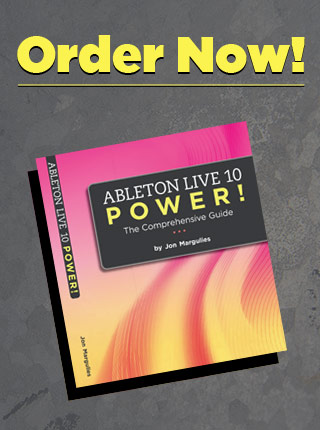So, as you may have guessed, we’ve just set up three separate MIDI tracks which will all be sending MIDI into a single Drum Rack. Let’s take a closer look at the routing:
In the second menu below MIDI To, you have a number of options for routing MIDI between tracks. For the track called Beat, we can either send the MIDI into the track’s input (Track In), or directly into the Drum Rack. For now, file this under very interesting. We’ll be coming back to it later.
In this situation, Track In is the one we need. This routing means that the MIDI is being directed into the Beats track in the conventional fashion, as if it were a MIDI keyboard.
In order for the Beats track to “listen” to the incoming MIDI, (and trigger the cells of the Drum Rack) you have to arm the track for recording…
…or set Monitor to In:
In this case, we want to record. So arm up that track. Now, fire off a scene of the MIDI clips and record a new clip…a nice long one:
Nifty! You now have a single MIDI clip with a whole load of drum variations created by mixing and matching the parts of the variations you programmed. It’s easy to edit, easy to make a stack of your favorite bits in the Session view, and easy to lay out an arrangement with as well.
Of course, once you’re further down the line with your song you might decide to split the parts out again, which is cool too…





